Armory Show
1913 : l’exposition organisée par l’Association of American Painters and Sculptors du 17 février au 15 mars 1913 à New-York signe un tournant dans ce que l’on pourrait définir comme le « centre de l’art » : d’Européen l’art s’implante sur le nouveau continent pour entériner la prédominance américaine à la fin du second conflit mondial. Des oeuvres impressionnistes, fauvistes et cubistes y sont présentées mais c’est surtout le travail de Marcel Duchamp avec la présentation de Nu descendant un escalier qui bouleverse l’opinion et défraie la chronique. Largement décriée par la critique, cette exposition a connu un tel succès qu’elle est devenue une des expositions les plus mythiques de l’Histoire de l’Art. Du reste, les chiffres parlent d'eux-mêmes : 4000 personnes invitées à l'inauguration ; pas moins de 1600 oeuvres et 10 000 à 12 000 visiteurs rien que pour le dernier jour de l'exposition.
Itinérante, l'exposition circule ensuite, dans un format plus réduit, à travers le territoire américain. Elle arrive d'abord à Chicago puis à Boston.
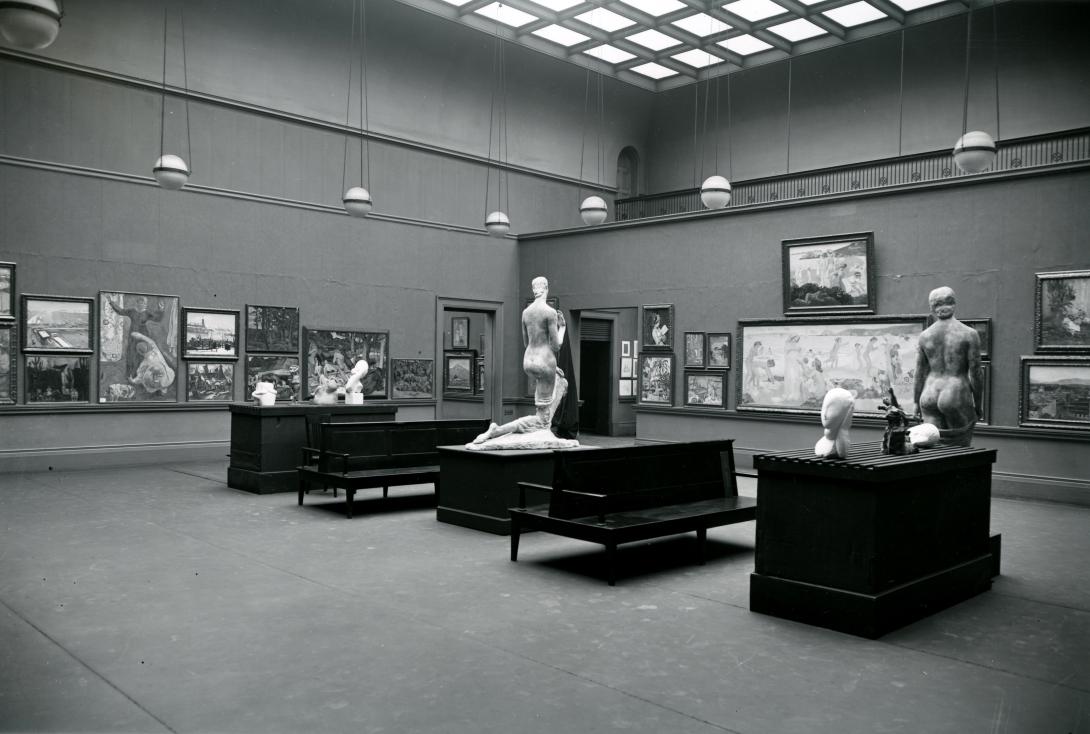
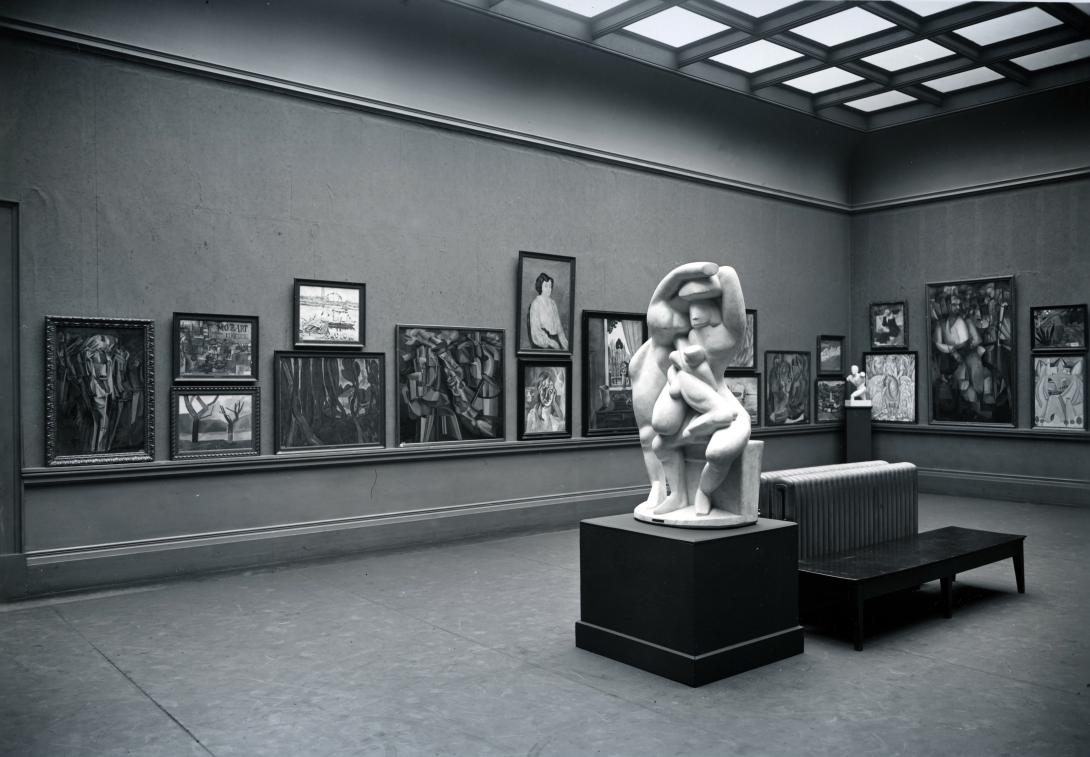

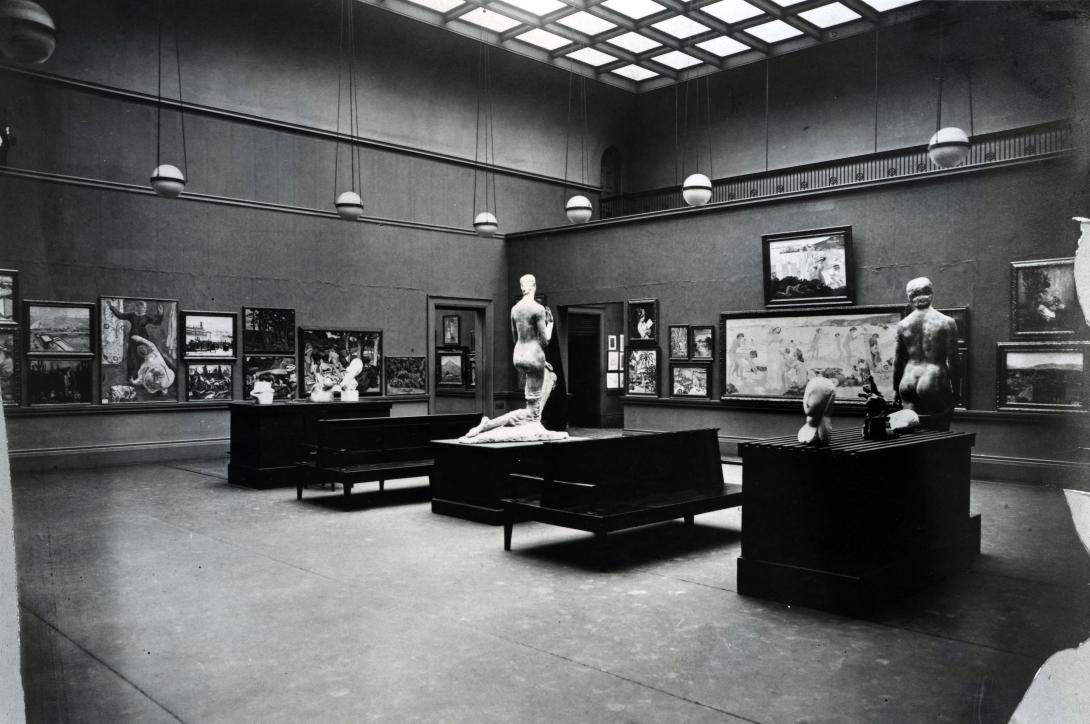

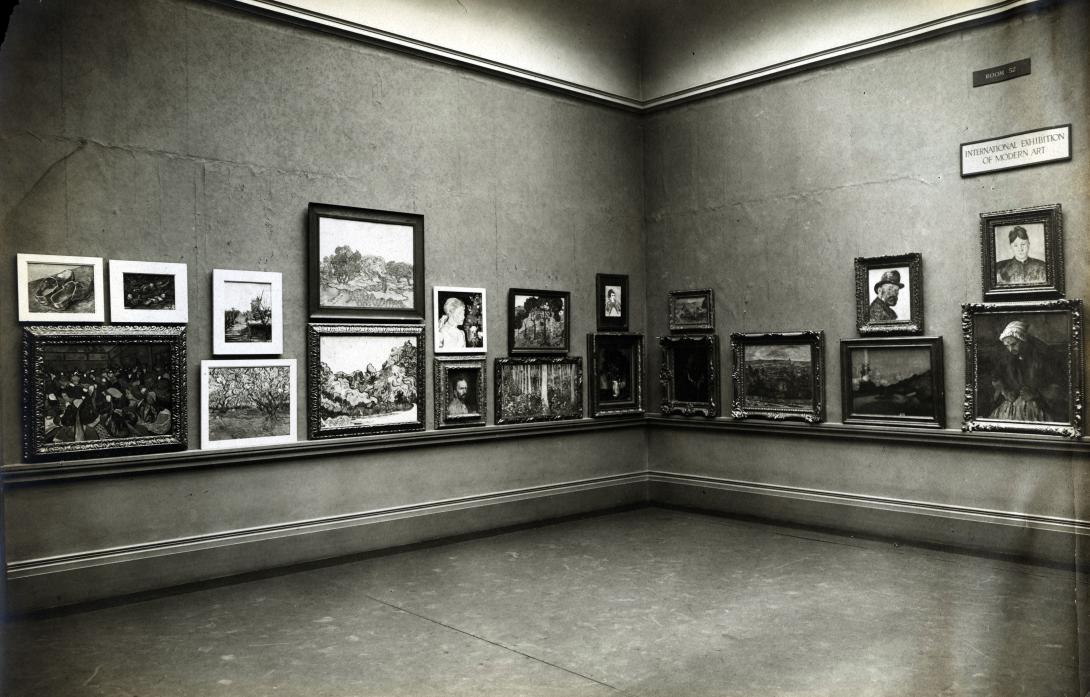

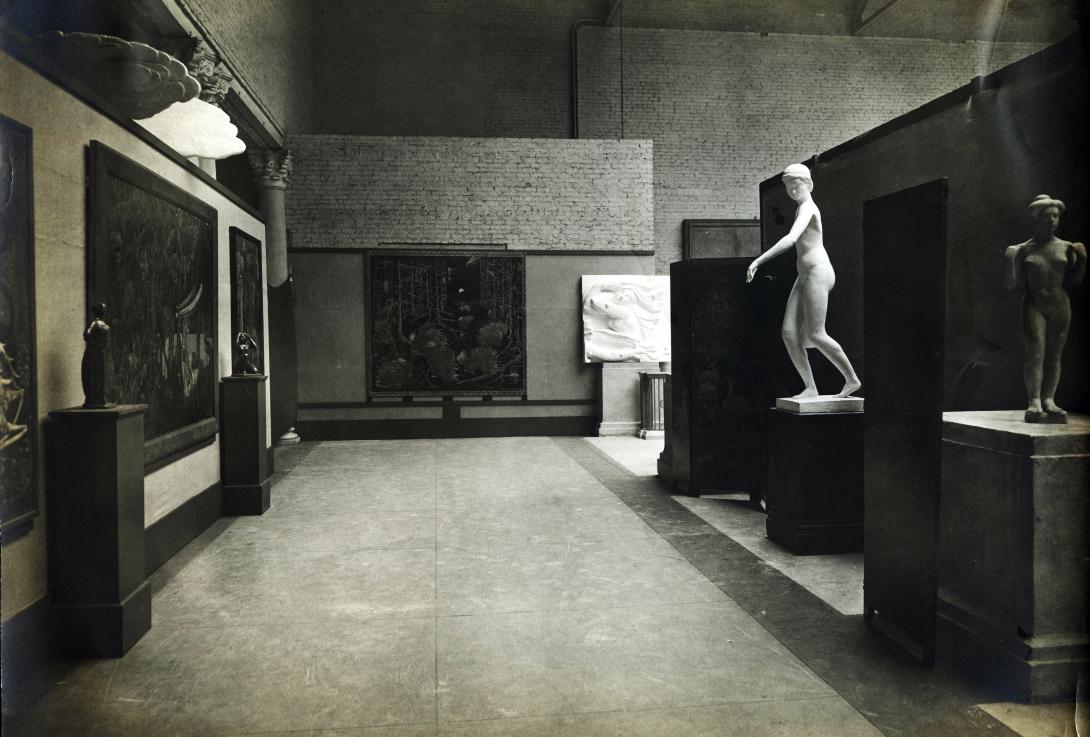
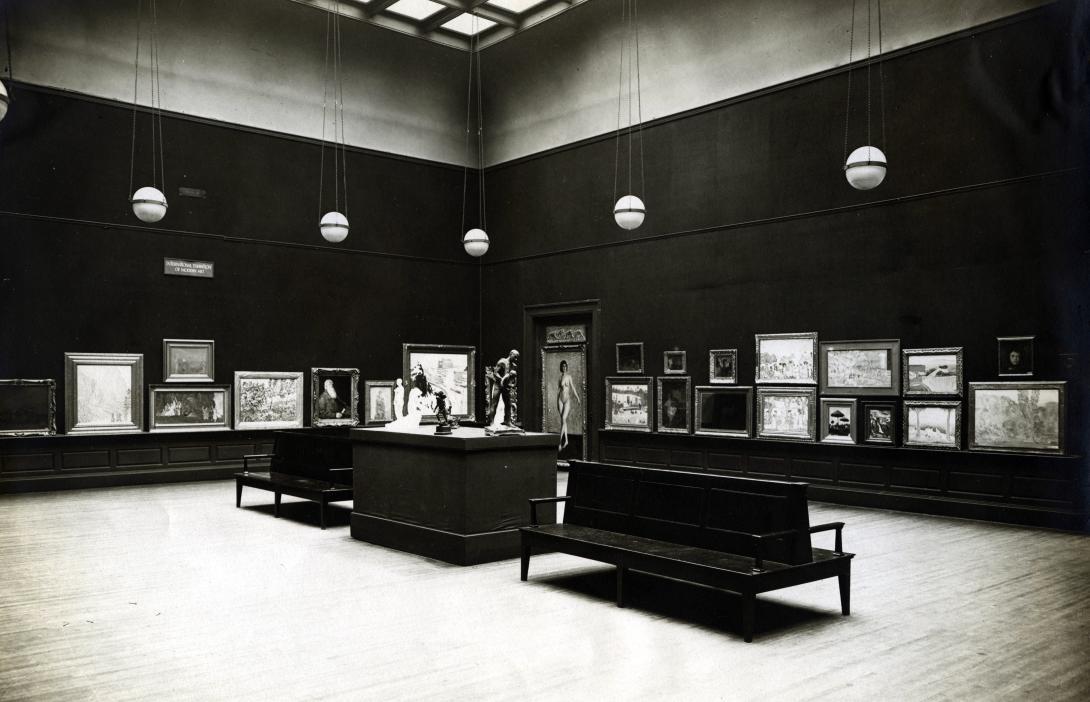
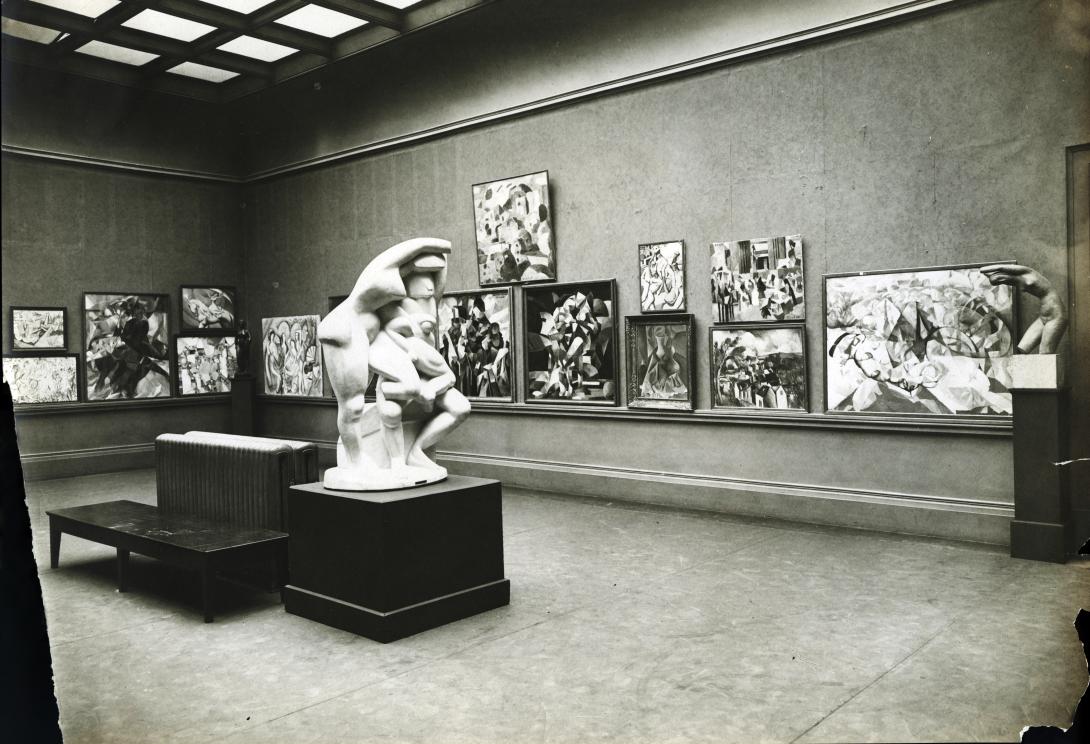

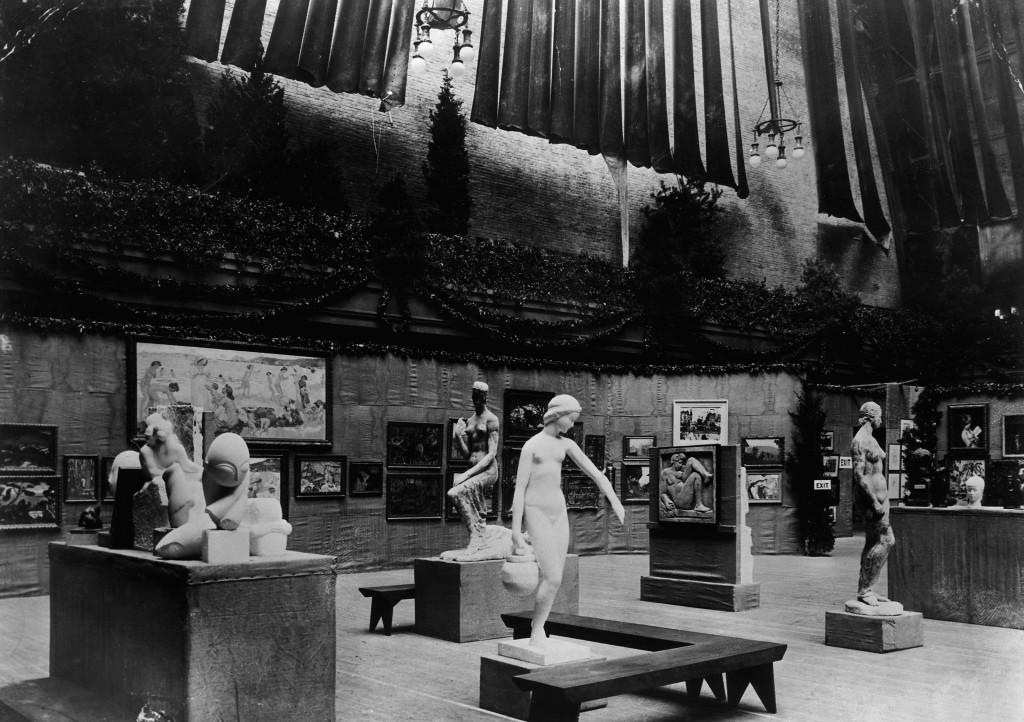
Principales expositions
Armory Show, 17 février au 15 mars 1913, 68 Lexington Avenue, New York ; du 24 mars au 16 avril 1913, Art Institute, Chicago ; 28 avril au 19 mai, Copley Society, Boston.
Textes fondateurs
Artistes associés
Albert Abensschein, Robert Ingersoll Aitken, John J. Alger, Karl Anderson, Alexander Archipenko, Edwin Marion Ashe, Florence Howell Barclay, George Grey Barnard, Chester Beach, Gifford Beal, Maurice Becker, Wladimir von Bechtejeff, Marion H. Beckett, George Bellows, H. Berlin, Joseph Bernard, Nelson N. Bickford, Karl Bitter, Olaf Bjorkman, Alexandre Blanchet, Guy Pène du Bois, Oscar Bluemner, Hans Bolz, Pierre Bonnard, Gutzon Borglum, Homer Boss, Antoine Bourdelle, Constantin Brancusi, Georges Braque, Bessie Marsh Brewer, D. Putman Brinley, Bolton Brown, Fannie Miller Brown, Patrick Henry Bruce, Mrs Bryson Burroughs, Paul Burlin, Charles Camoin, Arthur Beecher Carles, Myra Musselman Carr, Oscar E. Casare, Athos Casarini, Mary Cassatt, Paul Cézanne, Auguste Chabaud, O.E. Chaffe, Robert W. Chanler, Emilie Charmy, Pierre Puvis de Chavannes, Amos Chew, Alfred Vance Churchill, Gustave Cimiotti, Edwin Swift Clymer, Harry W. Coate, Nessa Cohen, Glenn O. Coleman, Howard Coluzzi, Charles Conder, Camille Corot, Kate Cory, Gustave Courbet, Arthur Crisp, Henri-Edmond Cross, Herbert Crowley, Carl Gordon Cutler, Leon Dabo, Andrew Dasburg, Honoré Daumier, Randall Davey, Jo Davidson, Stuart Davis, Arthur B. Davies, Perrine Van Dearing, Edgar Degas, Eugène Delacroix, Robert Delaunay, Maurice Denis, André Derain, Edith Dimock, Rudolph Dirks, Ruger Donoho, Henri Doucet, Katherine S. Dreier, Aileen Dresser, Laurence Tyler Dresser, Florence Dreyfous, Marcel Duchamp, Raymond Duchamp-Villon, Raoul Dufy, Richard H. Dufy, Georges Leon Dufrenoy, André Dunoyer de Segonzac, Abastenia Eberle, Henry B. Eddy, Jean Eels, Amos W. Engle, Jacob Epstein, Florence Este, Lily Everett, Jules Flandrin, Mary Foote, James Earle Fraser, Kenneth Frazier, Roger de La Fresnaye, Arthur Ernest Freund, Othon Friesz, Sherry Edmunson Fry, Ernest Fuhr, Paul Gauguin, Samuel Wood Gaylor, Phelan Gibb, Wilhelm Gimmi, Pierre Girieud, William Glackens, Albert Gleizes, Henry I. Glintenkamp, Vincent van Gogh, Anne Goldhwaite, Francisco Goya, Charles Guérin, Bernard Gussow, Bernhard Gutmann, Philip L. Hale, Samuel Halpert, Charles R. Harley, Marsden Hartley, Childe Hassam, Edith Haworth, Walter Helbig, Robert Henri, Julius Hess, Eugene Higgins, Margaret Hoard, Ferdinand Hodler, Nathaniel Hone, Charles Hopkinson, Edward Hopper, Cecil Howard, Albert Humphreys, Mrs Thomas Hunt, Margaret Wendell Huntington, Jean Auguste Dominique Ingres, James Dickson Innes, F. M. Jansen, Augustus E. John, Gwen John, Grace Mott Johnson, Julius Paul Junghanns, Wassily Kandinsky, Bernard Karfiol, Henry G. Keller, Edith L. King, Ernst Ludwig Kirchner, Adolph Kleiminger, Hermine E. Kleinert, Edward Adam Kramer, Leon Kroll, Walt Kuhn, Gaston Lachaise, Pierre Laprade, Marie Laurencin, Ernest Lawson, Arthur Lee, Derwent Lees, Fernand Léger, Wilhelm Lehmbruck, Rudolph Levy, Jonas Lie, Amy Londoner, George B. Luks, A.F. Lundberg, Dodge Macknight, Elmer Livingston MacRae, Gus Mager, Aristide Maillol, Édouard Manet, Henri Manguin, Edward Middleton Manigault, Manolo (Manuel Hugué), John Marin, Matthew Maris, Albert Marquet, Jacqueline Marval, Carolyn C. Mase, Henri Matisse, Alfred Henry Maurer, Max Mayrshofer, Francis McComas, Kathleen McEnery, Howard McLane, Hower MacLean, Charlotte Meltzer, Oscar Miestchaninoff, Kenneth Hayes Miller, David B. Milne, Claude Monet, Adolphe Monticelli, John Mowbray-Clarke, Henry Muhrmann, Edward Munch, Herman Dudley Murphy, Ethel Myers, Jerome Myers, Elie Nadelman, Frank A. Nankivell, Helen J. Niles, Olga Oppenheimer, Marjorie Organ, Walter Pach, Josephine Paddock, Jules Pascin, Agnes Pelton, Charles H. Pepper, Harriet Sophia Phillips, Francis Picabia, Pablo Picasso, Pietro, Camille Pissarro, Walter K. Pleuthner, Louise Pope, Louis Potter, T. E. Powers, Maurice Prendergast, James Preston, May Wilson Preston, James Pryde, Arthur Putnam, Bertrand Rasmussen, Odilon Redon, Pierre-Auguste Renoir, Henry Reuterdahl, Catherine N. Rhoades, William Rimmer, Boardman Robinson, Theodore Robinson, Auguste Rodin, Mary C. Rogers, Paul Rohland, Jules Edouard Roiné, Edward F. Rook, Georges Rouault, Henri Rousseau, Ker-Xavier Roussel, Charles C. Rumsey, George W. Russell, Morgan Russell, Albert Pinkham Ryder, William E. Schumacher, Charles Serret, Georges Seurat, Julius Seyler, Charles H. Shannon, Sidney Dale Shaw, Charles Sheeler, Walter Sickert, Paul Signac, Alfred Sisley, Max Slevogt, John Sloan, Amadéo de Sousa-Cardozo, Carl Sprinchorn, Philip Wilson Steer, Joseph Stella, Morgan Stinemetz, Nicolas Tarkhoff, Henry Fitch Taylor, William L. Taylor, Tobeen, Henri de Toulouse-Lautrec, Gaston Toussaint, Allen Tucker, Alden Twachtman John Henry Twachtman, Félix Vallotton, Raymond Duchamp-Villon, Jacques Villon, Maurice de Vlaminck, Bessie Potter Vonnoh, Édouard Vuillard, Abraham Walkowitz, F. M. Walts, Hilda Ward, Alexander L. Warshawsky, F. William Weber, E. Ambrose Webster, Friedrich August Weinzheimer, J. Alden Weir, Albert Weisgerber, Julius Wentscher, James Abbott McNeill Whistler, Charles Henry White, Claggett Wilson, Leon Wolf, Denys Wortman Jr, Enid Yandell, Jack B. Yeats, Arthur Young, William Zorach, Mahonri Young, Eugene Zak, Marguerite Zorach, William Zorach.
Artistes à rapprocher
William James Glackens, Robert Henri, Walt Kuhn, George Luks, Elmer Livingston MacRae, Jerome Myers, Everett Shinn, John French Sloan, Alfred Stieglitz, Henry Fitch Taylor.